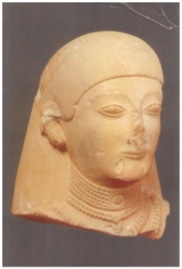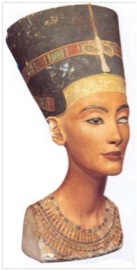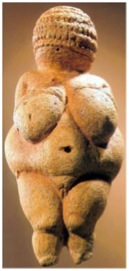ART 105 - INTERDISCIPLINARY SEMINAR (ARCHAEOLOGY – HISTORY OF ART – GREEK MYTHOLOGY - HISTORY OF RELIGIONS AND CIVILISATIONS)
COURSE OUTLINE
ART 105
INTERDISCIPLINARY SEMINAR
(ARCHAEOLOGY – HISTORY OF ART – GREEK MYTHOLOGY - HISTORY OF RELIGIONS AND CIVILISATIONS)



AUTUMN SEMESTER 2016
PROFESSOR: DR. SOPHOCLES SOPHOCLEOUS
tel. 22 003 111
CENTRE OF CULTURAL HERITAGE
Alexander the Great, no. 10, Old Lefkosia
MONDAYS, 18:00-20:00
DESCRIPTION OF THE SEMINAR
In this interdisciplinary seminar are examined and studied examples of the artistic production of various civilisations of Europe, of the Mediterranean and the Near East under the spectrum of Archaeology, History of Art, Art Criticism, History of Civilisations and Religions. Certain lessons are dedicated to the art and archaeology of Cyprus. Also, aspects of the ancient Greek mythology are studied and analysed, such as its iconography, allegories, symbolism and interpretation of the myths.
TEACHING METHODS
- Lectures with PowerPoint presentations.
- Use by the lecturer of the midwifery and dialectic methods in teaching.
- Questions by the Participants and discussion.
- Practical exercise in the class on the approach, study and commentary of artworks.
- Documentary presentations.
- Participation of the Seminarians in the teaching procedure with their own presentations in the class, if some of them wish to do so.
- Museum and Gallery visits.
TEACHING OUTCOMES
Methodology of approach and study of the art works: recording and commentary.
Development of the capacity for iconographic analysis, stylistic and aesthetic appreciation and evaluation of the art works.
Acquisition of fundamental knowledge in archaeology, art history, history of religions, Greek mythology and cultural heritage.
Sharpening of the visual observation, perception and improvement of the aesthetical culture and refined taste of every participant.
Development of the basic competence useful in the research, study and criticism in Art History.
Development of critical thinking in the approach, study and analysis of the artworks.
MANUALS
Hugh Honour and John Fleming, Παγκόσμια Ιστορία της Τέχνης, Αθήνα, 2008 (ISBN 1 85669 315 5)
J. G. Pedley, Greek Art and Archaeology (Published by Pearson Education, New Jersey), China, 2007 (4th edition ISBN 0-13-240934-8) Abreviation: Pedley 2007.
Sophocles Sophocleous, A Practical Manual for the Approach, Study and Appreciation of the Visual Arts (Recording-Commentary-Essay-Thesis), Lefkosia, 2009.
Supplementary Bibliography:
1. E. H. Gombrich, The Story of Art (Phaidon Press,16th edition), London, 2005 (ISBN 0 7148 3247 2)
E. H. Gombrich, Tο Xρονικό της Tέχνης (Mορφωτικό Ίδρυμα Eθνικής Tραπέζης), Kίνα, 2006 (ISBN 960-250-144-8)
2. Hugh Brigstocke, ed., The Oxford Companion to Western Art, (Oxford Univ. Press), Oxford, 2001 (R703 O98 2001)
3. Helen Gardner, et al., Gardner’s Art through the Ages (Harcourt Brace Jovanovich, 1980) 709 G226 1991
4. H. W. Janson, History of art … from the dawn of history to the present day (Harry N. Abrams, 1962) R709 J35 1962
5. Gowing Lawrence, ed., The Encyclopedia of visual art (Encyclopedia Britannica Int’l., 1983) R700.3 B862 1983 v. 1
6. Peter and L. Murray, The Penguin dictionary of art and artists (Penguin, 1989) R703 M983 1989
7. Harold Osborne, ed., The Oxford companion to art (Oxford Univ. Press, 1970) R703 O981970
8. Ralph E. Phillips, et al., The Visual arts: a world survey from prehistoric times to the present … (Jacaranda Press, 1980) 700 S988 1980
9. J. Boardman, Greek Art (Thames and Hudson), Singapore, 1996 (3rd revised edition ISBN 0-500-20292-3).
10. G. M.A. Richter, A Handbook of Greek Art. A Survey of the Visual Arts of Ancient Greece, Singapore, 1987 (9th edition ISBN 0-306-80298-8).
11. R. Higgins, Minoan and Mycenaean Art (Thames and Hudson), Singapore, 1994 (revised and reprinted ISBN 0-500-20184-6).
12. R. Osborne, Archaic and Classical Greek Art (Oxford University Press), Hong Kong, 1998 (3rd revised edition ISBN 0-19-284202-1).
13. T.H. Carpenter, Art and Myth in Ancient Greece (Thames and Hudson), Yugoslavia, 1991 (ISBN 0-500-20236-2).
14. Vassos Karageorghis, La civilisation préhistorique de Chypre, Athènes, 1976.
15. Vassos Karageorghis, Cyprus. From the Stone Age to the Romans, London, 1982.
16. Vassos Karageorghis, Ancient Cyprus, 7,000 Years of Art and Archaeology, Athènes, 1983.
17. Sophocles Sophocleous, Icons of Cyprus, Nicosia, 1994.
18. Sophocles Sophocleous, Icônes de Chypre. Diocèse de Limassol, 12e – 16e siècle, Nicosie, 2006.
TIMETABLE AND SYLLABUS
- Monday 03/10/2016: Formation and appearance of the first pagan religions: the concept and the divinisation of the male and female principles in the activities of the natural phenomena. Palaeolithic Europe and Neolithic Anatolia.
- Monday 10/10/2016: Formation and appearance of the first civilisations of the settled societies at the dawn of the Neolithic Era and their evolution. The case of Mesopotamia: a heritage that influences the Western civilisations until today.
- Monday 17/10/2016: Ancient Greek cosmogonic mythology: myths and legends of the creation of the World and the divinities of the Olympian Pantheon. The principal divinities, their functions, attributes and symbolism.
- Monday 24/10/2016: Ancient Greek mythology: the interpretation of some important myths (the Birth of Athena, the Birth of Aphrodite, Jason and Medea, Artemis and Akteon, Zeus and Danae, Zeus and the Rapt of Europe, the Rapt of Persephone, the Birth of Hermes and the first transaction in exchange commerce.
- Monday 31/10/2016: Ancient Egypt (Late 3rd to the Late 2nd millennium B.C.)
- Monday 07/11/2016: The first Aegean civilisations: Cyclades, Minoan Crete and Mycenaean civilisation (3000 – 1100/1050 B.C.). The appearance of the linear A and B scripts.
- Monday 14/11/2016: The Hellenic world during the Geometric Period (1100/1050 – 700 B.C.). The appearance of the Greek alphabet and the first monumental epic poetry of Homer. The Orientalising Century and the Archaic Period (700 – 475 B.C.): architecture, black and red figured pottery, sculpture (Kouros and Kore).
- Monday 21/11/2016: Documentary on the ancient Greek world and its relation with Eastern Mediterranean, produced by Professor Lane Fox, Oxford University. Discussion.
- Monday 28/11/2016: The Golden Age of Pericles, the Athenian Democracy and the creation of the first classical civilisation (450 – 400 B.C.).
- Monday 5/12/2016: Cultural heritage: notion and content. Historic Monuments of Lefkosia (Nicosia).
- Monday 12/12/2016: Cyprus at the crossroads of the Oriental Mediterranean. The Prehistoric Periods from the Pre-Neolithic to the Bronze Age (10th -2nd millennium B.C.). The appearance of the first Cypriot script, the so-called “Cypro-minoan script”, since the 16th c. B.C.
- Monday 19/12/2016: The Byzantine icons. Visit to the Byzantine Museum of Cyprus.